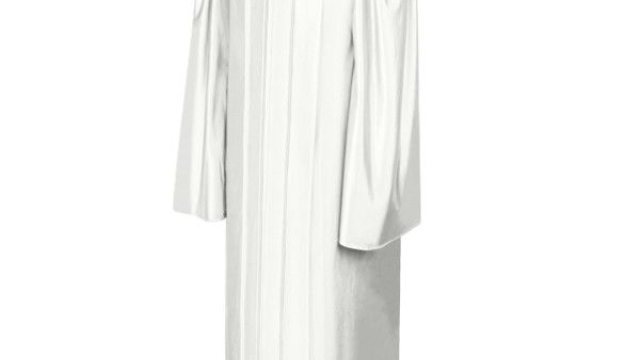
The harmonious blend of voices filled the air as they stood in perfect formation, donning their elegant choir robes. In the realm of music, aesthetics play a crucial role in captivating audiences, and choir robes serve as an essential element in enhancing the visual appeal of these melodious ensembles. With their rich history and symbolic significance, these garments not only lend a sense of unity and professionalism to the choir, but also contribute to the allure and grandeur of their performances.
Choir robes embody a long-standing tradition that dates back centuries, rooted in both cultural and religious practices. From humble beginnings in monastic settings to extravagant displays in cathedrals and concert halls, these robes have evolved to become an integral part of the choral experience. Crafted from luxurious fabrics, the flowing gowns evoke a sense of elegance, with their tailored cuts and regal colors commanding attention on the stage. As the embodiment of unity, choir robes erase any visual disparities among the performers, allowing their voices to take center stage, united in harmony and purpose.
History of Choir Robes
Choir robes have a rich and fascinating history that spans centuries. These elegant garments have been an integral part of choral traditions, adding a touch of grandeur and uniformity to performances. The origins of choir robes can be traced back to medieval times when religious chants and hymns played a significant role in worship ceremonies.
During this period, choirs were often made up of monks, priests, and other religious figures who dedicated their lives to the church. To symbolize their devotion and commitment, these individuals began donning special clothing, which eventually evolved into what we now recognize as choir robes.
In the early days, choir robes were typically plain and modest, reflecting the humble lifestyle of those who wore them. However, as choral music gained popularity and spread across different regions, the robes began to undergo changes in style and design. Embroidery, intricate patterns, and decorative elements became common, adding a touch of elegance and sophistication to the robes.
By the Renaissance period, choir robes had become more elaborate and ornate. Velvets, silks, and brocades were used, often adorned with exquisite gold and silver threadwork. The colors of the robes were also significant, representing different religious orders and hierarchical positions within the choir.
In modern times, choir robes continue to hold a special place in choral performances. While their designs may have evolved to suit contemporary tastes and trends, the essence of tradition still remains. Choir members wear robes to foster a sense of unity and to create a visually striking image during their performances, reminding audiences of the rich history and enduring allure of these captivating garments.
Symbolism and Meaning
Choir robes hold a rich symbolism that enhances the impact of any choral performance. These elegant garments not only unite the singers visually but also convey a deeper meaning that resonates with both performers and audiences.
The first layer of symbolism lies in the color of the choir robes. The chosen color often represents different aspects of spirituality and religious traditions. For instance, white robes signify purity, innocence, and the divine presence. In contrast, black robes can symbolize humility, mystery, and a sense of solemnity. Other hues, such as red, blue, or green, may be employed to evoke specific emotions or convey specific religious themes, further enhancing the overall experience.
Beyond color, choir robes also encompass symbolic elements in their design. One common feature is the inclusion of intricate patterns or embroideries, which can represent sacred symbols like crosses or musical notes, showcasing the intertwining of faith and harmonious melodies. The flowing nature of the robes itself can signify the ethereal quality of the music produced by the choir, as they seamlessly blend their voices in perfect harmony.
Additionally, the act of donning the choir robes holds symbolic significance. When singers put on these attire, they shed their individual identities and become part of a cohesive whole. The robes serve as a metaphorical uniform, reminding the performers that they are part of something greater than themselves and requiring them to set aside personal differences and ego. This transformation not only unifies the ensemble visually but also cultivates a sense of belonging and devotion to the musical journey they embark on together.
In conclusion, choir robes carry a profound symbolism that transcends the mere visual aspect of a choral performance. Through their colors, designs, and the transformative act of wearing them, these robes become powerful conduits for the expression of spirituality, unity, and dedication. They truly encapsulate the allure and elegance that lies at the heart of any choral experience.
Modern Designs and Trends
The world of choir robes has witnessed a refreshing wave of modern designs and trends that add a touch of contemporary elegance to the traditional attire. These innovative designs not only enhance the aesthetic appeal of choir robes but also reflect the evolving nature of choral music.
One prominent trend in modern choir robe design is the incorporation of vibrant colors. Gone are the days of monochrome robes; choirs now embrace a diverse range of hues that symbolize their uniqueness and individuality. The introduction of bold shades such as royal blue, deep purple, and fiery red has breathed new life into the traditional ensemble, allowing choirs to showcase their vibrant spirit.
Another notable trend is the integration of sleek and sophisticated silhouettes. Choir robes are no longer limited to flowing and loose-fitting designs. Contemporary choirs are exploring tailored cuts and slim fits that effortlessly complement the singers’ figures, creating a refined and polished appearance. These modern silhouettes not only accentuate the gracefulness of the choir members but also symbolize the harmonious blend of tradition and innovation.
In addition, embellishments and detailed accents have become increasingly popular in modern choir robe designs. Intricate lacework, delicate embroidery, and ornate patterns are now adorning robes, lending a touch of opulence to the attire. Such exquisite details not only capture attention but also exude an air of grandeur and sophistication, elevating the choir’s overall presentation.
From vibrant colors to sleek silhouettes and intricate embellishments, modern designs and trends in choir robes have brought a fresh and captivating allure to this age-old tradition. Choirs across the globe are embracing these innovative styles, redefining the way they present themselves and captivating audiences with their modern yet elegant ensemble.





